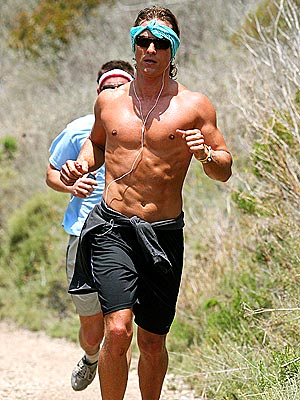Informal Survey: Risk Factors for Glaucoma
Dave posted Oct 25 2019:
Filed Under (tags):
- Read more about Informal Survey: Risk Factors for Glaucoma
- terry's blog
- Log in or register to post comments
Dave posted Oct 25 2019:
Here is a question from FitEyes member Jan:
Hello. Can anyone recommend the best dietary supplement for lowering eye pressure?
Hello Everyone,
This is what I have discovered since applying self-tonomtery.
Jack LaLanne recently wrapped up a tour promoting his 11th book, "Live Young Forever: 12 Steps to Optimum Health, Fitness & Longevity." One reason to trust what the man preaches: He has seen the dark side.
A reformed sugarholic
Dave,
I read that you can bench press without elevating your IOP but you would never do push-ups although they use many of the same muscles. Could you explain what it is that you see is the difference and how that position would be worse for IOP ?
Fritz
 There is a New York Times article entitled "Lactic Acid Is Not Muscles' Foe, It's Fuel" By GINA KOLATA published on May 16, 2006. I just read it today. The article is about recent discoveries in exercise physiology. It turns out that the accepted scientific understanding of a fundamental aspect of exercise was wrong for more than 80 years. It ends with a quote by Dr. Brooks: "The scientists were stuck in 1920." He's talking about the entire field of exercise physiology!
There is a New York Times article entitled "Lactic Acid Is Not Muscles' Foe, It's Fuel" By GINA KOLATA published on May 16, 2006. I just read it today. The article is about recent discoveries in exercise physiology. It turns out that the accepted scientific understanding of a fundamental aspect of exercise was wrong for more than 80 years. It ends with a quote by Dr. Brooks: "The scientists were stuck in 1920." He's talking about the entire field of exercise physiology!
Even when the mistake was shown by good research, the entire field continued to fight against Dr. Brooks's discoveries for decades. In some ways it reminds me of the fight against new tonometers such as the Ocular Response Analyzer and the Pascal Dynamic Contour tonometer that we see in ophthalmology now.
In my experience, science (as typically practiced) is wrong so much that I think people who maintain a predominantly scientific (i.e., materialistic) world view are disadvantaged. For example, the article says, "Coaches have understood things the scientists didn't." That is almost always the case in almost every field at all times.
The people who are "in the trenches" understand things scientists don't. Now this isn't to say that the scientific method is bad or that data-driven methodology should be discarded. Good coaches rely on a ton of data and they have excellent observation skills. They do have a scientific approach. The difference is they are not limited by a dogmatic scientific materialism.
Furthermore, the practice of science in today's world is so wrapped up with ego, power, career advancement and money that the altruistic aims of science get pushed aside. And new discoveries get trampled by established scientists who want to hold on to their positions of power and prestige.
 Purpose: To assess the dose-response relationship of vigorous physical activity (running distance, km·d-1) or cardiorespiratory fitness (meters-per-second pace during a 10-km footrace) to the risk for incident glaucoma.
Purpose: To assess the dose-response relationship of vigorous physical activity (running distance, km·d-1) or cardiorespiratory fitness (meters-per-second pace during a 10-km footrace) to the risk for incident glaucoma.
Conclusions: These data provide preliminary evidence that vigorous physical activity may reduce glaucoma risk, which, in the absence of medical record validation, could represent ocular hypertension in addition to frank glaucoma. Additional follow-up with validation is needed to identify the type of glaucoma affected.
See full text article attached.
 Background
Background
With the increasing number of people participating in physical aerobic exercise, jogging in particular, we considered that it would be worth knowing if there are should be limits to the exercise with regard to the intraocular pressure (IOP) of the eyes. The purpose of this study is to check IOP in healthy and primary glaucoma patients after aerobic exercise.
Methods
Does anyone know of any research done on the effect on IOP when doing rebounding type exercise (i.e.